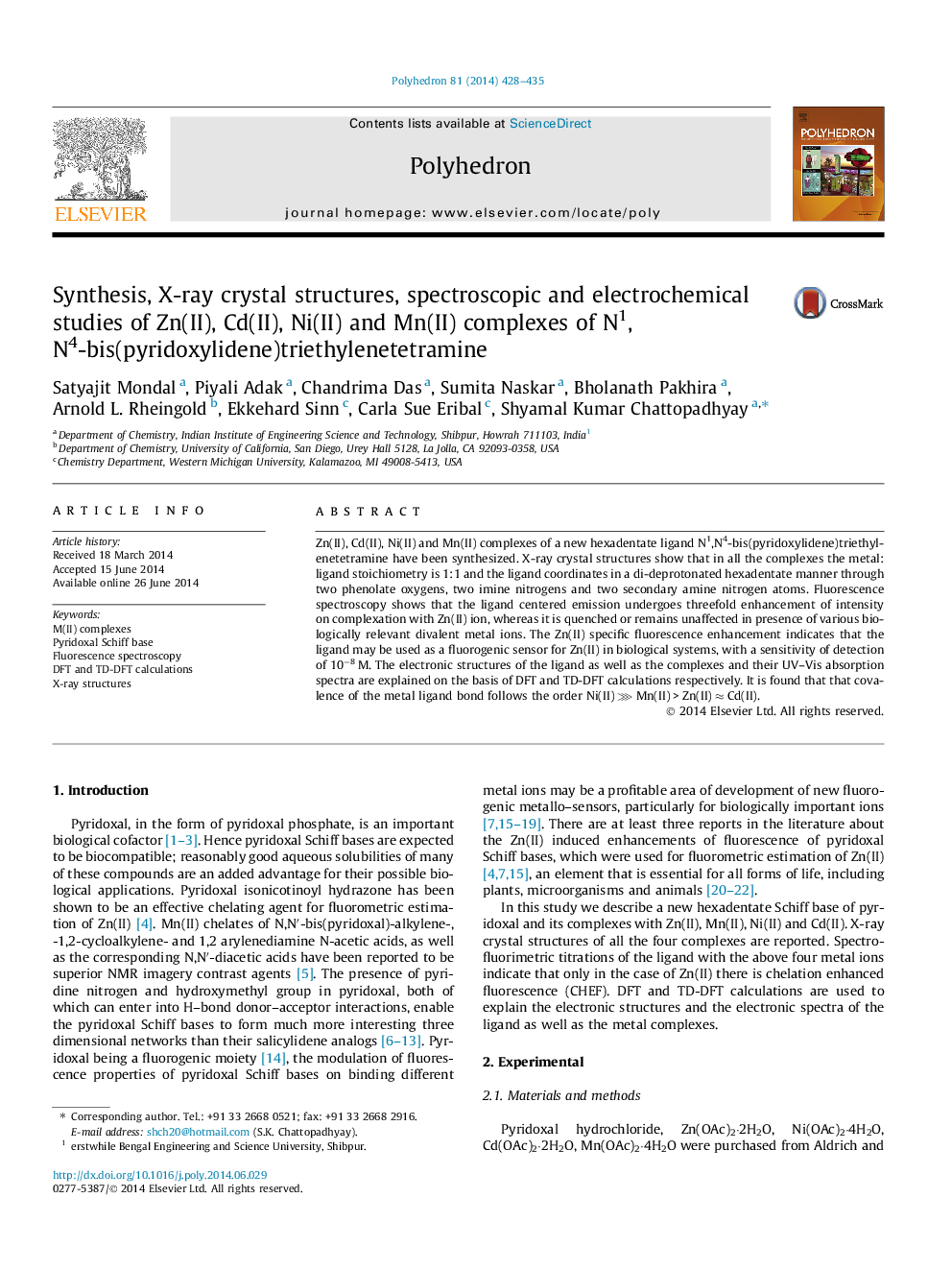| Article ID | Journal | Published Year | Pages | File Type |
|---|---|---|---|---|
| 1334449 | Polyhedron | 2014 | 8 Pages |
Zn(II), Cd(II), Ni(II) and Mn(II) complexes of a new hexadentate ligand N1,N4-bis(pyridoxylidene)triethylenetetramine have been synthesized. X-ray crystal structures show that in all the complexes the metal: ligand stoichiometry is 1:1 and the ligand coordinates in a di-deprotonated hexadentate manner through two phenolate oxygens, two imine nitrogens and two secondary amine nitrogen atoms. Fluorescence spectroscopy shows that the ligand centered emission undergoes threefold enhancement of intensity on complexation with Zn(II) ion, whereas it is quenched or remains unaffected in presence of various biologically relevant divalent metal ions. The Zn(II) specific fluorescence enhancement indicates that the ligand may be used as a fluorogenic sensor for Zn(II) in biological systems, with a sensitivity of detection of 10−8 M. The electronic structures of the ligand as well as the complexes and their UV–Vis absorption spectra are explained on the basis of DFT and TD-DFT calculations respectively. It is found that that covalence of the metal ligand bond follows the order Ni(II) ⋙⋙ Mn(II) > Zn(II) ≈ Cd(II).
Graphical abstractMononuclear complexes of Zn(II), Cd(II), Ni(II) and Mn(II) with a N4O2-donor pyridoxal Schiff base ligand are reported. DFT calculations indicate metal ligand covalence follows the order Ni(II) ⋙⋙Mn(II) > Zn(II) ≈ Cd(II). The Zn(II) specific fluorescence enhancement indicates that the ligand may be used as a fluorogenic sensor for Zn(II).Figure optionsDownload full-size imageDownload as PowerPoint slide
